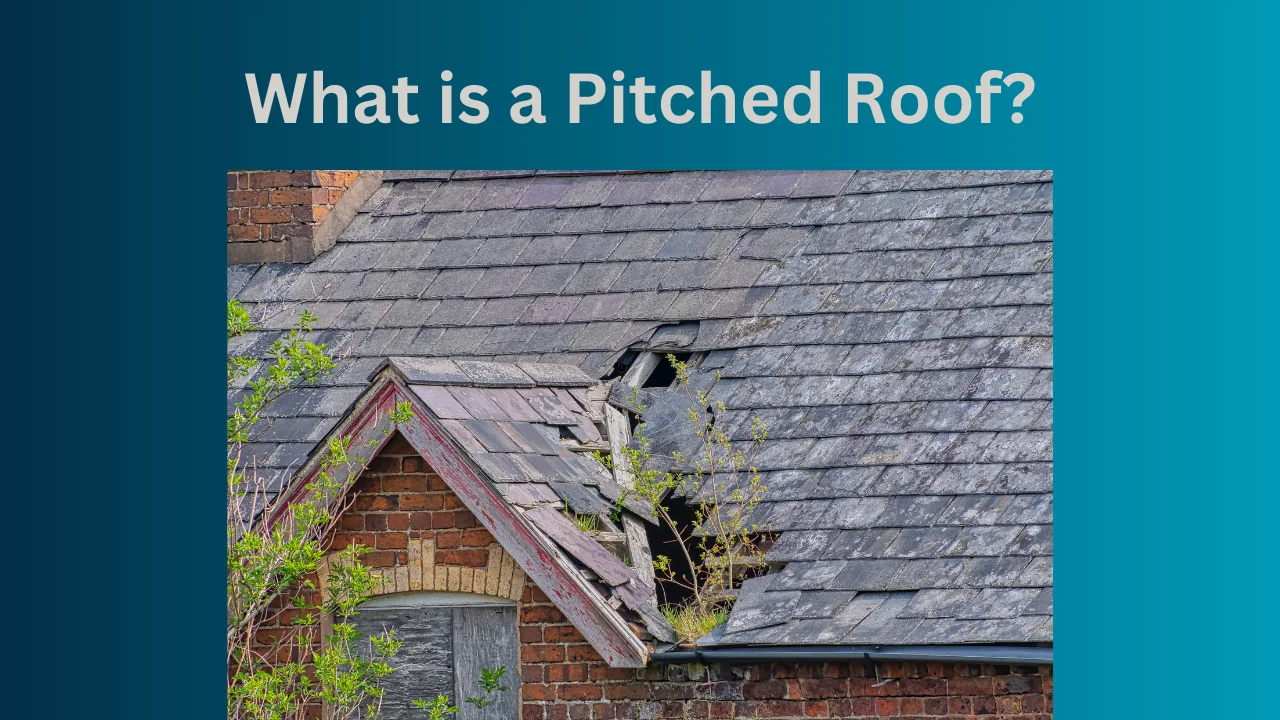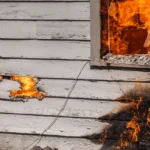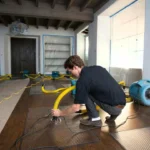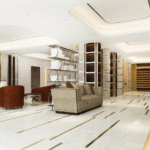Introduction
What is a Pitched Roof? Pitch roofs are common in architecture and are defined by their sloping surfaces that meet at a peak to create a unique triangle. To ensure the longevity and structural integrity of buildings, this architectural element is vital for efficient water and snow drainage. Factors such as local weather patterns, architectural fads, and individual taste impact the roof’s pitch, which in turn affects the roof’s practicality and visual attractiveness.
Purpose and Popularity
The main purpose of a pitched roof is to divert precipitation away from the building’s framework, where it can eventually cause structural damage. Their gently sloping terrain minimizes the likelihood of water seepage by facilitating rapid and efficient runoff. Pitched roofs are well-liked not only for their functional value but also for the variety of styles they can achieve. They are versatile enough to adapt to a wide range of roof styles, from the more conventional gable and hip to the more elaborate mansard and gambrel, and they look great in both commercial and residential buildings. Pitch roofs are popular in many parts of the world because of their adaptability and the many advantages they provide, such as more attic space, better insulation, and better ventilation.
Types of Pitched Roofs
Gable and Hip Roof Structures
One of the most prevalent kinds of pitched roofs is the gable roof, which is easily identifiable by its basic triangular shape. End walls with a triangular extension called a gable are formed by two sloping sides that meet at a ridge. The simplicity and efficiency of this design in shedding snow and water make it a favorite. In contrast, hip roofs have a convergent peak and slanted sides. When it comes to hurricane-prone areas, hip roofs are a dependable choice due to their enhanced stability and resistance to wind.
Mansard and Gambrel Roof Designs
Mansard roofs are a type of pitched roof characterized by a much steeper lower slope and two equally steep upper slopes on each of the four sides. Full use of the attic or other under-floor space is possible with this layout. Gambrel roofs are commonly found on barns and farmhouses; they resemble mansards but are simpler in design and have two distinct sideslopes. These plans are great because they allow you to add square footage without adding a whole new story.
Steep Slope and Mild Slope
In areas that receive a lot of snow, a steep slope roof is a good choice because the snow won’t be able to accumulate and put too much strain on the structure. On the other hand, mild slope roofs tend to be more prevalent in regions that experience less severe weather. These roofs are less prone to wind uplift and require less maintenance, striking a good balance between form and function.
Regional Variations
The style and pitch of roofs can differ greatly depending on the local climate and architecture. To help with snow shedding, steep pitches are common in snowy areas. On the other hand, gentler slopes are more typical in temperate regions, where practicality and aesthetics take precedence. Roof designs reflect a combination of practicality and local architectural history, influenced by each region’s distinct environmental factors and cultural norms.
Architectural Styles
The pitch of a roof is a key architectural feature that can make or break a building. Intricate mansard roofs are typical of Victorian architecture, but a simple gable roof might be preferred in a more contemporary minimalist style. Roofs can be customized to suit individual needs and tastes by architects and builders thanks to the variety of styles available, each of which offers unique advantages in terms of energy efficiency, space utilization, and aesthetics.
Benefits of Pitched Roofs
Efficient Drainage and Structural Durability
Pitched roofs are great because they divert rain and snowmelt away from buildings and away from structural damage by allowing water to drain efficiently. Because water causes less wear and tear on roofs, this sloping design reduces the possibility of leaks and increases the roof’s lifespan.
Thermal Insulation and Ventilation
A building’s thermal efficiency is greatly enhanced by a pitched roof. Insulating the attic space under the roof can help with both winter heat loss and summer heat gain. Better air circulation, made possible by the roof’s natural slope, increases the building’s total energy efficiency and makes life inside more pleasant.
Additional Living or Storage Space
Pitch roofs offer additional space, which is one of their distinctive advantages. Extra bedrooms, offices, or recreation rooms can be created from this attic space, or it can just be used as storage. Because of this adaptability, pitched roofs are a great choice for homeowners who want to make the most of their space.
Aesthetic and Design Flexibility
There is a vast variety of styles that can be achieved with pitched roofs, from the traditional gable roof to the elaborate mansard. Because of its adaptability, architects can customize the roof to complement the building’s style, which boosts the property’s curb appeal and, perhaps, its value.
Longevity and Reduced Maintenance
Pitched roofs, thanks to their construction and materials, tend to outlast flat roofs. Less frequent repairs and maintenance are required due to the sloping surface’s reduced impact of UV rays and extreme weather. Because of their longevity, pitched roofs are a good long-term investment, especially for companies and homeowners who want to keep maintenance expenses to a minimum.
Materials and Construction
Common Roofing Materials
Many different materials are suitable for covering pitched roofs, and each has its own set of advantages and aesthetic considerations. Because of their variety of colors and styles, low price, and ease of installation, asphalt shingles are the most popular. Despite its higher initial cost, metal roofing offers long-term value due to its fire resistance, energy efficiency, and ability to reflect heat away from the structure. Tiles made of clay or concrete have a unique appearance and are great for warmer climates because of their insulation. Despite being more high-maintenance, wood shingles and shakes are preferred due to their insulating properties and natural beauty.
Construction Techniques
If you want your pitched roof to last, there are a few things you need to do when building it. The initial step in building a roof is putting up the framing, which usually consists of rafters or trusses. The roof and ceiling are supported by prefabricated triangular units called trusses, and the walls and roof ridge are connected by individual beams called rafters. The next step in laying a roof is the sheathing, which is typically oriented strand board (OSB) or plywood laid over the framing. After that, a waterproof layer called underlayment is put in to prevent water from seeping in.
Insulation and Ventilation
Pitched roofs rely on adequate insulation and ventilation to keep energy efficiency and lifespan in good shape. One way to reduce heat transfer is to insulate the space between the rafters or even higher up on the ceiling of the highest floor. Materials like spray foam, fiberglass, and foam board are utilized according to the individual requirements and available funds. Continuous air flow, made possible by vents at the roof’s ridge and soffits, regulates temperature differences between the attic and the outside and prevents moisture buildup.
Sustainable and Eco-Friendly Roofing Options
Many green roofing solutions for pitched roofs are chosen by homeowners and builders in their quest for sustainability. By incorporating photovoltaic cells into conventional roofing materials, solar tiles are able to produce electricity without sacrificing the aesthetic value of the roof. Though typically seen on flat or gently sloping roofs, green or living roofs can be engineered to fit pitched roofs as well. Vegetation coverings like these help with air quality, insulate the building, and provide habitat for native animals.
Challenges and Solutions in Pitched Roof Maintenance
Common Problems
Pitch roofs have many benefits, but they are not problem-free. The most typical issue is leaks, which can be caused by broken shingles or tiles, shoddy installation, or old flashing around vents and chimneys. In colder regions, water can back up and seep under the roofing material due to ice dams that form at the eaves. The degradation of roofing materials due to exposure to severe weather can also occur over time, requiring repairs or replacement.
Repair and Maintenance Best Practices
To make a pitched roof last longer, it needs to be inspected and maintained regularly. Twice yearly, or after a severe storm, homeowners should check the roof for damage. Gutter cleaning for proper drainage, shingle replacement (if needed), and inspection of vents and chimneys for signs of wear and tear are common maintenance tasks. In addition to evaluating the roof’s condition, professional roofers can fix any problems they find and provide advice on how to avoid similar problems in the future.
Cost Considerations and Longevity
Depending on the materials and design complexity, the initial cost of installing a pitched roof can vary greatly. Nevertheless, the investment is usually justified in the long run by the savings on energy bills and maintenance. Pitch roofs, when built and cared for correctly, can endure for twenty to one hundred years, with metal and tile providing the greatest durability.
FAQs
How do you calculate the pitch of a roof?
The pitch of a roof is calculated by dividing the vertical rise by the horizontal span, expressed as a ratio or in degrees.
What are the advantages of pitched roofs compared to flat roofs?
Pitched roofs offer better drainage, longer lifespan, additional attic space, and improved thermal insulation compared to flat roofs.
Which roofing materials are best for pitched roofs?
Asphalt shingles, metal, clay tiles, and wood shakes are among the best materials for pitched roofs, each suitable for different climates and aesthetic preferences.
How does a pitched roof improve a building’s energy efficiency?
A pitched roof improves energy efficiency by facilitating better insulation and ventilation, reducing heat loss in winter and heat gain in summer.
What are the common problems with pitched roofs?
Common problems include leaks, ice dams, and the deterioration of roofing materials due to weather exposure.
Conclusion
The unique combination of structural advantages, aesthetic flexibility, and practicality makes pitched roofs stand out among architectural styles. Their many benefits, such as improved insulation, better water drainage, and the ability to add square footage to a building, make them a popular option. What is a Pitched Roof? Homeowners and builders can get the most out of pitched roofs and make sure they last and perform well by choosing the right materials, following construction standards, and keeping up with routine maintenance. In the varied world of architectural design, pitched roofs continue to be a dependable and appealing choice for both new and renovated buildings.

Shannon Reyes is a seasoned writer with a knack for crafting engaging blogs on a variety of service industries, including plumbing, cleansing, moving, pest control, and roofing. With a keen eye for detail and a passion for helping readers navigate complex topics, Shannon brings her expertise to life through informative and accessible content.











